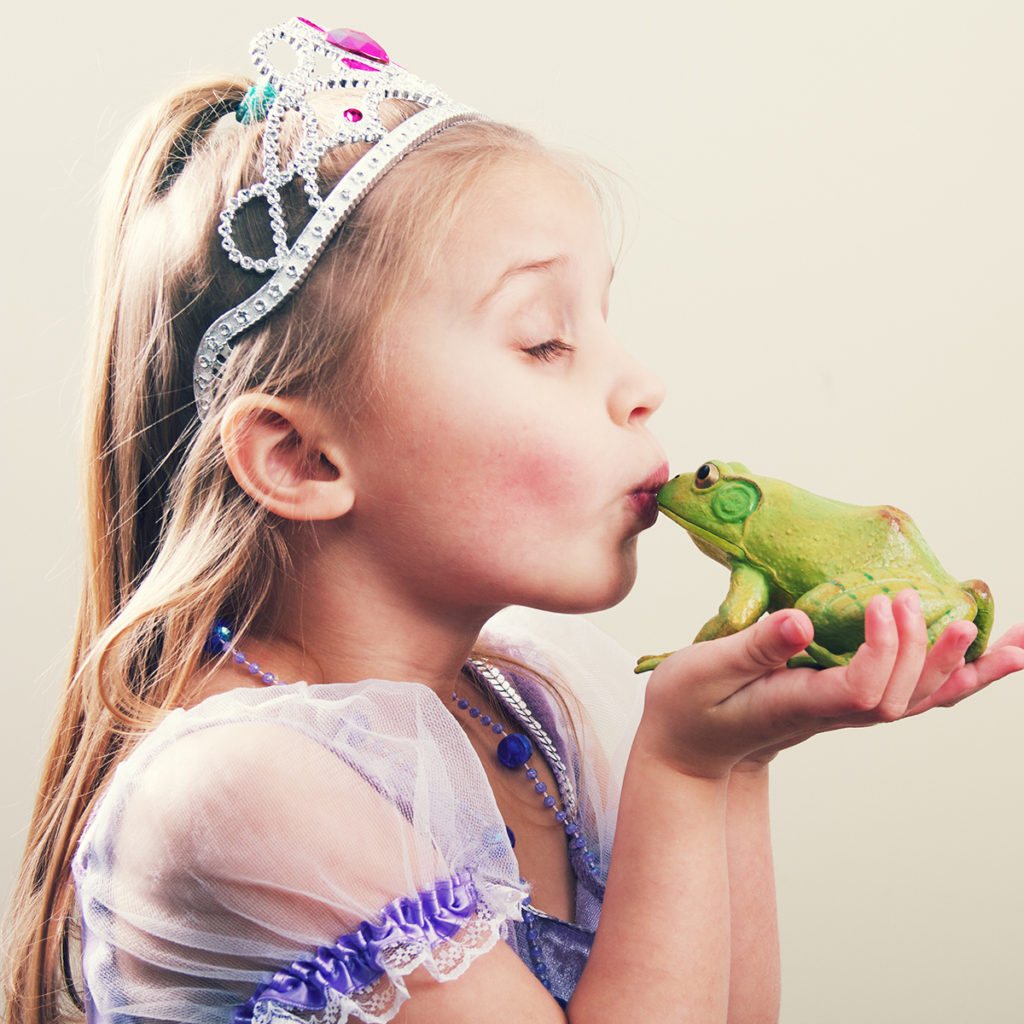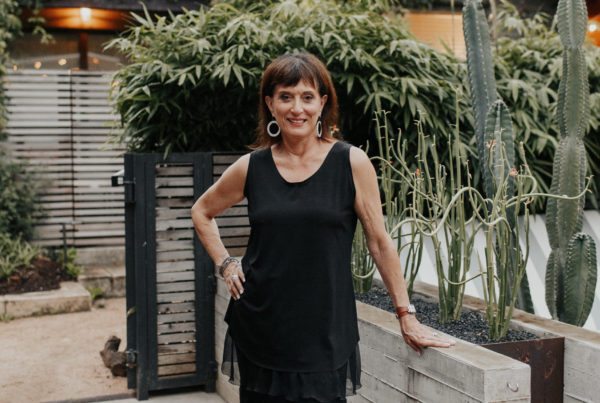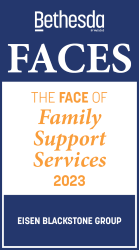Part One
Let’s be honest, we all want the fairy tale; the carriage leading us off into our happily ever afterland. What is interesting is that while we all grew up watching Disney and dreaming about our prince or princess, we may not have factored real life into the mix.
What about the hard realities of for better or for worse and in sickness and in health? Is it the end of your fairytale if you are heading into the oh-so dreaded divorce? So many of us feel shamed by or deny that divorce is even possible…until it happens to you! But, after the dust settles, the ultimate question for your life becomes: is my fairy tale still possible?
Well, first let’s dissect the meaning of a fairy tale, the often sought after, little attained phrase that leaves us desiring more. After a quick Google search, you might be surprised at what resulted:
Fairy tale is defined as “a children’s story about magical and imaginary beings and lands.” Okay, that is fair. However, the next definition on the list is even more telling, “a fabricated story, especially one intended to deceive.”
But wait, intended to deceive? What about striving for the Cinderella story – work hard, have a fairy godmother, find your prince charming and get to happily ever after, right? No one tells us this is fabricated or is often meant to deceive the viewer!
We all cozy up on the couch, watch the fairy tale, digest it and take it on as a right of passage for our life’s happiness, always and forever after.
So, what does the perfect marriage look like? What does it mean to find love and stay in love forever after you say, “I do”? And what does it mean when you don’t find it with the right person and happen to have kids with them?
Life is messy and complicated. It’s not always a fairy tale.
Thankfully, divorce is a more acceptable option now than ever before in our history, and couples wishing to part ways can opt for a friendly dissolution. But unfortunately, by the time the standard process is over, both parties are fully drained both emotionally and financially, leaving regret as the only item left on the table. All that said, is it possible to have a compassionate divorce? Is it possible to write your own “fairy tale” ending… for you and your kids?
Children need a loving, kind and compassionate family to teach them how to be loving, kind and compassionate in their lives as they grow and develop from children to adults. Unfortunately, much of the divorce battles become about the power struggle that existed in the marriage that continues to play itself out in the divorce between the adults. Sadly and more often, the divorce is all about the adults seeking to win the power struggle in their marriage. They continue the same marital dance; they choreographed the dance in their relationship and they continue to dance the dance they created and are often unwilling to take responsibility for the relationship pattern. Blame often seems an easier option for many adults.
Remember, it takes a lot of courage to learn the best way to navigate this journey with the children’s needs as a priority. Change is hard for everyone in the family, but mostly for the children. Dive in with us as we investigate what it looks like to live life without the standard fairy tale, but rather to write your own happy beginning—one that won’t deceive you; one that best protects and preserves your child’s childhood and is truly in the best interest of the child.
Part Two
The Fairy Tale Rewrite (written by a family counselor, who still wanted the fairy tale, because we all do)

By Roberta Eisen, M.Ed., LPC, NCC
Roberta Eisen, M.Ed., LPC, NCC, is a master practitioner in coaching, mediation, counseling and consulting services for families. Over the past three decades, her expertise has assisted parents and children through the transitions of divorce and beyond. She served as the consultant to the American Psychological Association to create and implement the Parenting Education class for the Program for Agreement and Cooperation in Contested Custody Cases for the Family Court of the Superior Court of the District of Columbia. The author of the curriculum for the Parenting Education Class for the Allegheny County Court of Common Pleas, Pittsburgh, Roberta also teaches parenting education classes, presents workshops in mediation and negotiation, provides conflict analysis in high conflict divorces, and teaches compassionate parenting throughout the country .
A Fairytale Family
I was my mother’s only daughter. My mother was an elementary school teacher who was passionate and dramatic about teaching children, so of course fairy tales were a part of my early rearing. My mother always tried her best to make my dreams come true and to give me what she believed were the best childhood experiences.
I grew up mesmerized by enchanting fairy tales and imaginative childhood stories. I believed that they could come true, as long as you were a good person and treated others as you would expect them to treat you. If you were raised like me, you probably know this as the Golden Rule. As we get older, it seems that some people don’t know about that rule anymore!
I grew up in Pittsburgh, Pennsylvania during the dawn of educational television. One of the most magical components of my childhood was Mister Rogers and I consider myself fortunate that he began his career during this formative time in my life. Mister Rogers was mystical to me. He had a gift of getting into the minds of children and developing all of the characters that lived in the neighborhood. Everyone in his neighborhood communicated in a kind and loving way; mostly everyone got along, and although having a difference of opinion with someone was okay, the characters always figured it out in a mutually respectful, kind and compassionate way.
It was always a beautiful day in the neighborhood; the neighborhood was just like a family. However, in this family, no one was mean or angry and everyone respected each other, just because that’s what families are supposed to do!
Like many other little boys and girls, I fantasized that fairy tales could indeed come true. I never wanted to stop believing because maybe that meant my dream would not come true. Besides, it’s fun to keep on believing. Who doesn’t want to hold onto their dreams and desires; these are the spirits of life that give us each something to look forward to. Our imaginations unlock wonderful, private, special places that no one else can see or change.
I vividly remember watching a live taping of the Mister Rogers show as a young child. He always made you feel so comfortable listening to the things he had to say, and I took those lessons to heart. Even after seeing that all the characters were make-believe, I still chose to let my heart believe in fairy tales and let my imagination craft beautiful dreams of what my life would become in my dreams.
The first wedding
Ever since I can remember, I dreamed of myself as a bride, a picture painted in my mind since I was a young girl. I’ve always had a flair for drama, so imagine how important my “fairy tale” was and how vivid the image was as I grew into a young woman in Pittsburgh. I would gracefully don a beautiful, full, white gown and walk down the aisle toward my happily ever after life. After all, I thought that if you dream hard enough and do your best, your dreams are bound to all come true.
Balance this idyllic vision with the reality of a woman growing up in the 1960s. Back then, the popular mantra was that men and especially women could not have sex until they were married. Thus, those who felt strong desires succumbed to the pressure of getting married at an early age. It only makes sense that my first marriage was to my high school sweetheart, a nice Jewish boy from a nice Jewish family who seemed to make my parents very happy. Then there was permission to have sex! But…who really knows who they are at 19 years old, let alone who they want to spend the rest of their lives with?
Complexity comes with age, and kids
After having two beautiful little girls, and not such great sex, I realized that I needed more from my marriage and in my life than my high school boyfriend could offer. We had grown up through our twenties and early thirties and wanted very different things in our lives. We were steadily growing further and further apart and identified with different goals and interests. He began to self-medicate with drugs and alcohol to ease the stressors of our marriage; being a parent was more than he could handle. I chose a path of protecting my daughters from the craziness that an alcoholic parent can introduce into childhood. I knew I had to get out of the marriage and find a way to be on my own. I knew I had to protect my children as much as possible. My dilemma was figuring out how I might protect my children from the scary things and simultaneously show them they still had both a mother and a father who love them, just like in the fairy tales. That meant that I, too, could demonstrate love, kindness, empathy and compassion in my family – even in my divorce.
The decision to leave was one of the most difficult decisions I ever made. I didn’t want to give up the fairy tale or admit that dreams don’t always come true. The stigma of divorce was fierce in my generation, but I learned to hold my head high and disregard what others thought about me. Instead, I focused on what I needed to do for my children’s best interest, and the fact that their father had become a detriment to their well-being and an unhealthy distraction in our family. So, I held my head high and held on to the fairy tale, concluding that I had simply made a mistake and learned from it. I would certainly never make the same mistake twice!
My own happy ending
For those of us willing to reflect on childhood lessons, the fairy tale divorce may still be a reality worth seeking. I knew better than to run right into another relationship until my children and I felt that things had stabilized.
As for me, I am now happily remarried to my third husband and did find love again. This time, I wrote my own happy ending, and still do every day with my husband, my daughters, my step children, and most importantly, for myself.
Happily ever after is really determined by you. You are the gate keeper and owner of your own happiness. You determine your own outcomes. If happiness cannot be achieved with the person you said “I do” to, it may be time to re-chart or re-write a new narrative for your story. A new story that can employ a healthy balance of kindness, empathy, and courage and compassion to re-write your fairy tale. So many of us believe that the stories that we remember from the past should predict our outcomes in the present. While we must always respect and honor history, we must acknowledge and beware that it can keep us stuck in the past, which only keeps us further embedded in things we cannot change. Our tendency becomes to hold on to unrealistic outcomes and expectations, by trying to change them just one more time.
Reliable outcomes are up to you. You, and you alone, have the power to control your own outcomes if you can learn the best way possible to navigate from the present into the future in your family.
If I can do it, you can do it. I just always remember what Mister Rogers taught children and what my parents taught me. Unfortunately, some children don’t have parents that know about Mister Rogers at all, let alone, the value of his principles.
Part Three: When You Kiss a Frog, but There’s No Change, Create Your Own Happy Ending with Healthy Boundaries
By Carly Blackstone, PsyD
Carly Blackstone, PsyD has nearly 15 years of experience as a clinician. Most of her work is in the area of individual, adolescent or adult therapy, Parent Coordination or Reunification Therapy. From 2015 to 2018, she was the Director of the UPO Office of Parent Coordination at D.C. Superior Court. Carly is currently a Licensed Clinical Psychologist treating children, adolescents, adults and families in Maryland, Virginia and D.C.
I am part of the first cable TV generation, and I was a young teenager when The Little Mermaid and Beauty and the Beast were first released in the early 1990s. These heartwarming, imaginative tales were wonderful, but gave me a limited vision for how a storybook life should go—a princess in emotional or physical distress is rescued by a charming, handsome prince who saves the day and makes all the dreams come true for the heroine. Better yet, maybe there would be a Frog Prince just waiting to turn into your Prince Charming—all you must do is kiss him on his frog lips and he will be everything you hoped for.
While Disney has done a great job of adapting to modern culture and breaking down some of these stereotypes in recent years, there is still the pervasive theme that happy endings include a couple who end up together and stay together.

Unfortunately, that wasn’t the Disney reality of my childhood, or my adulthood. Like my mother, I had a childhood with parents who deeply cared for me and were vested in my well-being, but they turned out to parent better apart than together.
So, what happens when you kiss the frog, and it’s still a frog?
During traditional divorce proceedings, the ultimate goal for a family is to transition from one home to two homes peacefully, so that both parents still pursue their respective happy endings. In this scenario, both parents are trusted to be good, hardworking folks who care about their family and their children.
The reality is this is not the case for many separations and co-parenting scenarios. After years of counseling with families, I have seen several clients who face trying situations co-parenting because of one partner not holding their weight, not being there to come to an amicable solution.
When one parent is not empathetic and kind, the children are left torn, fighting ensues and everyone is seemingly miserable. Even worse, what if one is a manipulative, dishonest spouse plagued with narcissistic traits? Let’s pretend you once believed this person was extremely kind, despite the bright red warning flags of a poor communicator and over reactor. How do you then write your fairy tale ending if you aren’t dealing with Prince (or Princess!) Charming anymore?
While this scenario doesn’t paint a pretty fairytale, it is also not impossible to change for the better. Bottom line, you are in control of your own life. Many times, these scenarios create a feeling of helplessness for the partner that is empathetic and does want change. With the right tools in use, there is a way out. It is possible to separate from a villain and prioritize your child’s needs simultaneously. Give two different methods of co-parenting a try.
There are two well-known types of co-parenting: collaborative and parallel. Each family must consider which type fits their situation. In both situations, each parent behaves like a driver independently navigating in their own car to the same destination.
Parallel co-parents drive like strangers on the road; they respect each other’s boundaries and space, stay in their lane, and allow each other to drive however and whenever they choose.
Collaborative co-parents coordinate the drive together; they coordinate times that they leave, stop at rest stops together, and drive at a similar pace.
In both situations, kids and parents arrive physically and emotionally safe. While a parallel approach might be the popular approach when separating from a villain character or a frog that won’t turn prince, a mix of both types might be a better fit for the child. Boundaries, self-care and a clear Parental Agreement can help to de-escalate conflict and keep the course smooth.
When your co-parent is emotionally abusive to your child, you may send a message that reads, “I hate you so much. I wish I never met you, nevertheless have a child with you!” On those days, the co-parents remain separate, on a parallel parenting trajectory. The co-parent does not respond to those texts, as one driving would not respond to someone yelling in the car next to them.
While the empathetic co-parent disagrees with the other’s parenting choices, he stays in his lane, keeps his thoughts to himself and moves on. In a child-focused family separation, it is hard to imagine how difficult it can be to receive these texts and then be respectful to your co-parent in person, but it can be done.
Now imagine your child’s high school graduation: The ceremony is over, and families are all taking proud pictures with their beaming graduates. In that moment, what is ideal for your child is to celebrate with both of her parents easily and calmly. But can you all stand together and chit-chat? Can you even take a picture together like many other students can in their cap and gown? In these pivotal life moments, your child doesn’t care what comments her parents are saying to each other in text. That’s not what matters. That’s the messy real-life stuff they don’t tell you about in the fairy tales.
As hard as it may be for both co-parenting parties, what is best for your child in those moments may be a collaborative versus parallel parenting moment. Again, choose what is right for you, make the changes you can control, and don’t try to make your frog into a fairy tale.
While my mother and I grew up in different generations, this simple truth remains: You can live your life by The Golden Rule, but that doesn’t always mean others will treat you the same way in return. Unfortunately, that may include your spouse – past, present, or future.
If your life’s journey leads you toward a co-parenting situation, keep co-parenting tools and the principles of self-love, empathy, and compassion close by as your guide. Create healthy boundaries. Make self-care a priority. From there, navigate each circumstance carefully to serve your child’s best interest.
With careful course correction, you can still reach your happy ending even though it may look a little different than you originally envisioned.




